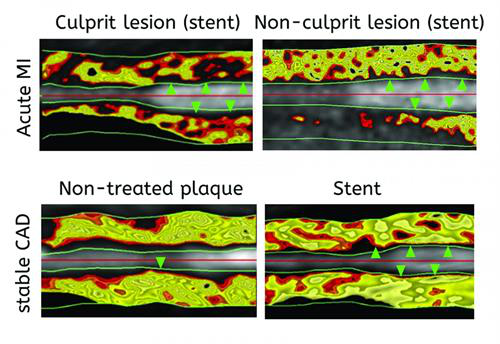With this in place your doctor can determine the best way to treat it. My doctors never found my 80% blockage of the right carotid artery, leaving me at extreme risk of another stroke until it totally closed up. Some possibilities:
Do you want the lawnmower?
http://www.articlecity.com/videos/health/Lawnmower-For-Clogged-Arteries-175286465.php
Or Drano? I would be worried about this, sloughing off chunks
http://www.ivanhoe.com/channels/p_channelstory.cfm?storyid=26404
Or conventional?
http://video.answers.com/learn-about-coronary-bypass-surgery-286302728
Or;
Israeli study uses gold particles to ‘seek and destroy’ artery blockages
New CT technique identifies blood vessel plaque
By Kate Madden Yee, AuntMinnie.com staff writerJuly 13, 2017 -- A new CT technique can measure blood vessel inflammation, allowing doctors to identify and treat patients at risk for cardiovascular disease, according to a U.K. study published online July 12 in Science Translational Medicine.
A team led by Dr. Alexios Antonopoulos, PhD, of the University of Oxford created a method to identify blood vessel inflammation from measurements of fat tissue around arteries using CT. The technique uses a "fat attenuation index" (FAI), which is based on changes in fat cell size that correlated with markers of blood vessel inflammation in samples from 453 patients undergoing cardiac surgery. Among these patients, increased FAI correlated with blood vessel inflammation in a subset of 40 patients who were also evaluated with PET imaging.
Antonopoulos' group went on to quantify FAI in 273 additional subjects. They found that the marker changed around suspicious lesions in five patients who experienced heart attacks.

A new imaging methodology called FAI identifies inflamed artery lesions
that pose the most risk to patients. Image courtesy of Antonopoulos et
al and Science Translational Medicine.
No comments:
Post a Comment